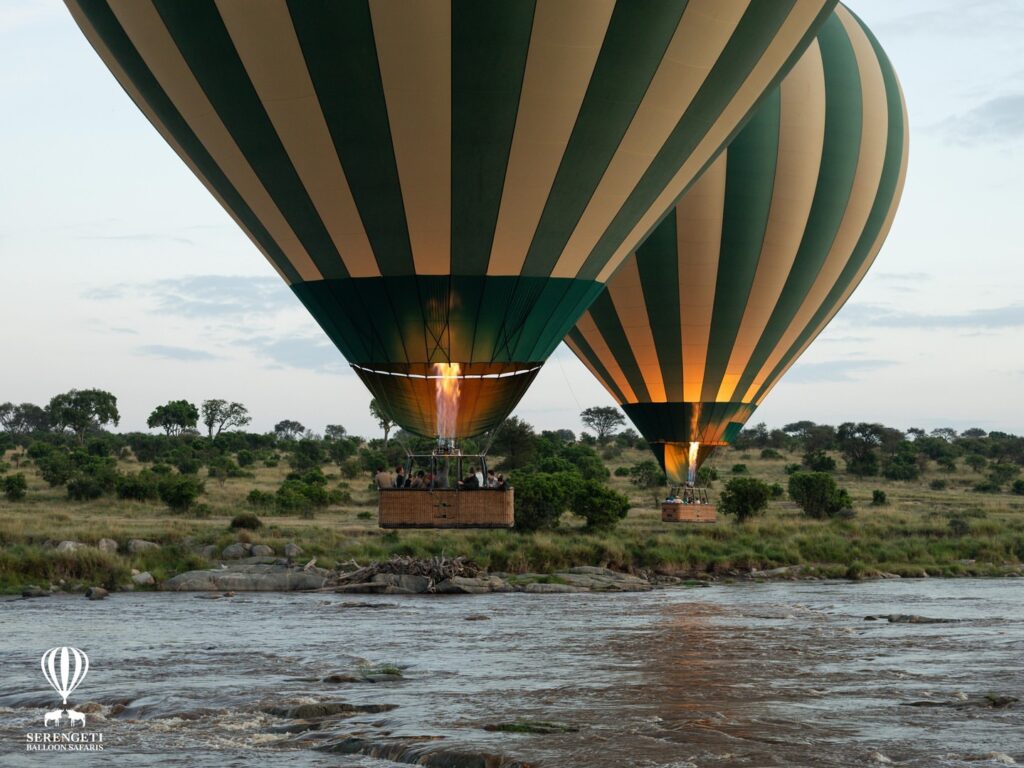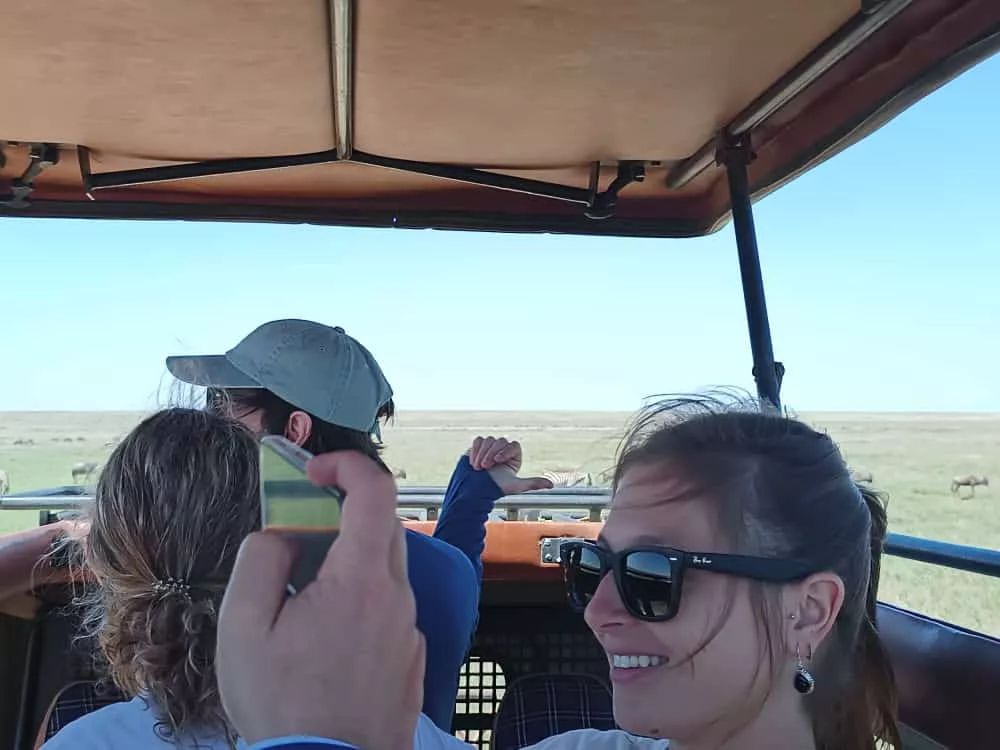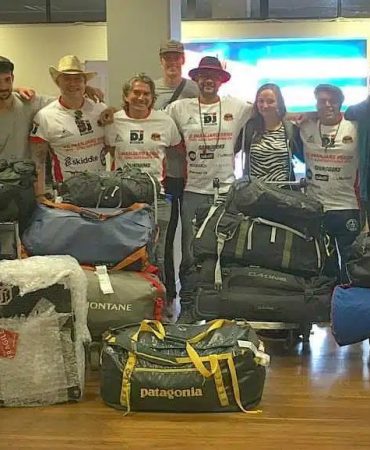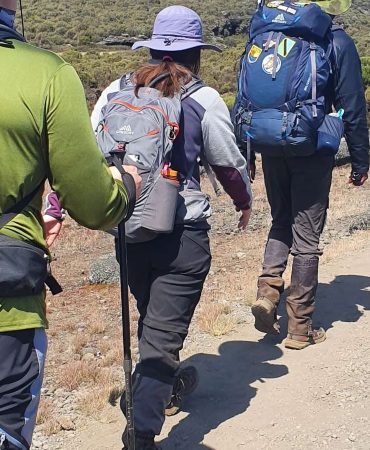Serengeti National Park is home to stunning wildlife. Explore 6 unmissable wonders in this world-renowned safari destination for an unforgettable adventure.



Serengeti National Park: Top 5 Wildlife Encounters in Tanzania
Introduction
Serengeti National Park, one of the most renowned wildlife reserves in the world, is located in Tanzania. Spanning over 14,750 square kilometers, it is famous for its vast savannas, diverse wildlife, and the iconic Great Migration. This park offers unparalleled wildlife encounters that attract tourists from around the globe. In this article, we will explore five spectacular wildlife encounters in Serengeti National Park, providing detailed insights into the park’s geography, culture, activities, and practical travel tips to ensure an unforgettable adventure.
Geographical Information
Location and Size of Serengeti National Park
Serengeti National Park is situated in northern Tanzania, stretching to the southwestern part of Kenya, where it merges with the Maasai Mara National Reserve. Covering approximately 14,750 square kilometers, the park forms part of the larger Serengeti ecosystem, which includes the Ngorongoro Conservation Area and the Maswa Game Reserve. The park’s expansive landscapes range from vast grasslands and savannas to riverine forests and woodlands.
Climate and Best Times to Visit
The climate in Serengeti National Park is generally warm and dry, with two distinct rainy seasons. The short rains occur from November to December, while the long rains last from March to May. The dry season, from June to October, is considered the best time to visit due to the abundance of wildlife around water sources. However, the period from January to February is also ideal for witnessing the calving season, where thousands of newborn animals take their first steps.
Unique Ecosystems and Habitats
Serengeti National Park boasts a variety of ecosystems, each supporting diverse wildlife populations. The Serengeti plains are renowned for their grasslands, which provide the perfect habitat for herbivores like wildebeest and zebras. The woodlands and kopjes (rocky outcrops) offer shelter to predators such as lions and leopards. The rivers and wetlands are home to hippos, crocodiles, and numerous bird species. This diversity in habitats ensures a rich and dynamic wildlife experience for visitors.
Cultural Insights
Historical Significance of the Serengeti
The Serengeti holds a significant place in the history of human civilization. Archaeological findings in the Olduvai Gorge, located within the greater Serengeti ecosystem, reveal some of the earliest evidence of human ancestors. These findings provide crucial insights into human evolution and the development of early tools and culture.
Local Tribes and Traditions
The Maasai people are the predominant indigenous group living around the Serengeti. Known for their distinctive customs, dress, and connection to the land, the Maasai have a deep cultural heritage that revolves around cattle herding and pastoralism. Visitors can engage with Maasai communities to learn about their traditional lifestyle, folklore, and craftsmanship.
Cultural Impact of Wildlife Conservation
Wildlife conservation in the Serengeti has a profound cultural impact on local communities. Conservation efforts not only protect biodiversity but also support eco-tourism, which provides employment and income for residents. Additionally, conservation programs often involve education and community outreach, fostering a sense of stewardship and pride among locals for their natural heritage.
Must-Visit Attractions
The Great Migration
The Great Migration is perhaps the most spectacular wildlife event in the Serengeti. Over 1.5 million wildebeest, along with hundreds of thousands of zebras and gazelles, migrate annually in a continuous loop from the Serengeti to the Maasai Mara in search of fresh grazing. This journey involves dramatic river crossings, particularly at the Grumeti and Mara Rivers, where predators like crocodiles lie in wait.
Ngorongoro Crater
The Ngorongoro Crater, a UNESCO World Heritage Site, is a volcanic caldera located within the Ngorongoro Conservation Area. The crater’s lush plains, acacia woodlands, and soda lakes harbor a rich array of wildlife, including the Big Five. It is a must-visit attraction due to its breathtaking scenery and high density of animals, providing excellent opportunities for game viewing.
Seronera River Valley
The Seronera River Valley is known for its year-round water supply, making it a prime location for wildlife spotting. The area is famous for its resident lion prides, leopards, and cheetahs. The lush vegetation and abundance of prey attract predators, offering visitors a chance to witness dramatic hunting scenes and predator-prey interactions.
Grumeti River
The Grumeti River is another significant attraction in the western corridor of the Serengeti. During the migration, wildebeest must cross this river, where large crocodiles pose a formidable threat. The riverbanks are also home to hippos and numerous bird species, making it a vibrant and dynamic ecosystem to explore.
Lobo Valley
Located in the northern part of the Serengeti, Lobo Valley is renowned for its picturesque landscapes and abundant wildlife. The area is less frequented by tourists, providing a more secluded and intimate safari experience. Visitors can expect to see large herds of elephants, buffaloes, and diverse predator populations, including lions and hyenas.
Activities and Experiences
Safari Game Drives
Safari game drives are the quintessential way to experience the Serengeti. Guided by experienced rangers, visitors can explore different regions of the park, observing wildlife in their natural habitats. Game drives can be conducted in the early morning or late afternoon, maximizing the chances of spotting animals during their most active periods.
Hot Air Balloon Rides
For a unique and breathtaking perspective, hot air balloon rides over the Serengeti offer an unparalleled experience. Floating silently above the plains at dawn, visitors can witness the vastness of the landscape and the movement of wildlife below. The balloon ride typically concludes with a champagne breakfast in the bush, enhancing the magical experience.
Walking Safaris
Walking safaris provide an intimate and immersive way to explore the Serengeti. Led by armed guides, these safaris allow visitors to learn about the smaller details of the ecosystem, including plants, insects, and animal tracks. Walking through the wilderness on foot offers a deeper connection to nature and a sense of adventure.
Bird Watching
The Serengeti is a paradise for bird watchers, boasting over 500 bird species. From the vibrant lilac-breasted roller to the majestic African fish eagle, the park’s diverse habitats support a rich avian population. Bird watching can be enjoyed throughout the year, with migratory species adding to the variety during certain seasons.
Night Safaris
Night safaris reveal a different side of the Serengeti, showcasing nocturnal wildlife that is rarely seen during the day. Using spotlights, guides help visitors spot animals such as leopards, genets, and bush babies. The thrill of the unknown and the chance to see elusive creatures make night safaris an exciting addition to any itinerary.
Wildlife Encounters
Big Five: Lion, Leopard, Elephant, Rhino, Buffalo
The Big Five are the most sought-after animals on any safari: lions, leopards, elephants, rhinos, and buffaloes. The Serengeti is one of the best places in the world to see these magnificent creatures in their natural environment. Lions are particularly abundant, with large prides roaming the plains. Leopards, though more elusive, can often be spotted in the Seronera Valley. Elephants and buffaloes are frequently seen throughout the park, while rhinos are best spotted in the Ngorongoro Crater.
Cheetah and African Wild Dogs
Cheetahs, the fastest land animals, are a highlight of the Serengeti. These sleek predators are often seen hunting on the open plains. African wild dogs, though rarer, are a fascinating sight. Known for their complex social structures and cooperative hunting techniques, encountering a pack of wild dogs is a memorable experience.
Giraffes and Zebras
Giraffes, with their long necks and graceful movements, are a common sight in the Serengeti. These gentle giants can be seen browsing the acacia trees. Zebras, with their striking black-and-white stripes, often accompany wildebeest during the migration. Their herds create dramatic and picturesque scenes across the landscape.
Hippos and Crocodiles
The rivers and wetlands of the Serengeti are home to large populations of hippos and crocodiles. Hippos spend most of their day submerged in water to stay cool, emerging at night to graze. Crocodiles, particularly in the Grumeti and Mara Rivers, are formidable predators, lying in wait for migrating herds to cross the water.
Wildebeest and Gazelles
The wildebeest, known for their annual migration, are one of the Serengeti’s most iconic species. Accompanied by zebras and various species of gazelles, they traverse the plains in search of fresh grazing. This migration is not only a spectacular sight but also a critical ecological event, sustaining numerous predators and scavengers along the way.
Travel Tips
Accommodation Options
The Serengeti offers a range of accommodation options to suit different budgets and preferences. From luxury lodges and tented camps to more affordable public campsites, visitors can choose the type of experience they desire. Popular lodges include the Four Seasons Safari Lodge and Singita Grumeti, while budget travelers can opt for basic campsites managed by Tanzania National Parks.
Transportation within the Park
Getting around the Serengeti typically involves 4×4 safari vehicles, which are essential for navigating the park’s rugged terrain. Many lodges and camps offer guided game drives as part of their packages. For a more flexible schedule, visitors can hire private vehicles with a driver-guide. Additionally, small aircraft services provide quick transfers between different regions of the park.
Packing Essentials for a Safari
When packing for a safari in the Serengeti, it is important to bring essentials such as lightweight clothing in neutral colors, a wide-brimmed hat, sunglasses, sunscreen, insect repellent, and a good pair of binoculars. A camera with a telephoto lens is also recommended for capturing wildlife at a distance. Comfortable, sturdy shoes are essential for walking safaris and exploring the terrain.
Photography Tips
To capture the best wildlife photos, it is important to have the right equipment and techniques. A DSLR or mirrorless camera with a telephoto lens (200-400mm) is ideal. Use a bean bag or a monopod for stability in the safari vehicle. Early morning and late afternoon light provide the best conditions for photography, highlighting the animals and the landscape beautifully. Patience and a good understanding of animal behavior also contribute to successful wildlife photography.
Language and Communication
Swahili is the official language of Tanzania, but English is widely spoken, especially in tourist areas. Learning a few basic Swahili phrases can enhance the travel experience and facilitate better communication with locals. Most guides and lodge staff are proficient in English, ensuring that language barriers are minimal for visitors.
Safety and Health Precautions
Vaccinations and Health Advisories
Travelers to Tanzania should ensure they are up-to-date on routine vaccinations and consider additional ones such as yellow fever, typhoid, and hepatitis A and B. Malaria is a risk in the Serengeti, so taking prophylactic medication and using mosquito repellents and nets is essential. It is advisable to consult a travel health specialist before departure.
Safety Tips for Tourists
While the Serengeti is generally safe for tourists, it is important to follow certain safety guidelines. Always listen to the advice of guides and rangers, stay inside the vehicle during game drives, and maintain a safe distance from wildlife. At lodges and camps, avoid walking alone at night and be aware of potential hazards such as snakes and insects.
Responsible Wildlife Viewing
Responsible wildlife viewing is crucial for the conservation of the Serengeti’s ecosystems. Visitors should adhere to park rules, such as not disturbing animals, keeping noise levels low, and not feeding wildlife. Maintaining a respectful distance ensures the safety of both the animals and the visitors, preserving the natural behavior and habitats of the species.
Dealing with Insects and Wildlife Hazards
Insects, particularly mosquitoes and tsetse flies, can be a nuisance in the Serengeti. Wearing long sleeves and pants, using insect repellent, and sleeping under mosquito nets can mitigate these issues. Additionally, being aware of potential wildlife hazards, such as keeping a safe distance from hippos and avoiding confrontations with large predators, is essential for a safe safari experience.
Budget Planning
Cost of Accommodation and Tours
The cost of accommodation and tours in the Serengeti can vary widely. Luxury lodges can cost upwards of $500 per night, while budget campsites are available for as little as $50 per night. Guided tours and safaris also range in price, with private tours being more expensive than group options. Planning and booking in advance can help manage costs.
Budget vs. Luxury Safaris
Choosing between a budget and a luxury safari depends on personal preferences and financial considerations. Budget safaris typically involve camping or staying in basic lodges, with shared game drives and simpler amenities. Luxury safaris offer high-end accommodations, personalized service, gourmet meals, and exclusive game drives. Both options provide memorable experiences, but the level of comfort and exclusivity differs.
Money-Saving Tips
To save money on a Serengeti safari, consider traveling during the shoulder seasons (April-May and November) when prices are lower, and crowds are thinner. Booking all-inclusive packages can also provide better value. Additionally, joining group tours rather than private ones and staying in mid-range lodges or camps can significantly reduce costs.
Best Value Safari Operators
Several safari operators offer excellent value for money, combining quality service with reasonable prices. Companies such as Leopard Tours, Basecamp Tanzania, and Zara Tours have good reputations and offer a range of safari options to suit different budgets. Reading reviews and seeking recommendations can help in choosing a reliable operator.
Local Cuisine
Traditional Tanzanian Dishes
Tanzanian cuisine is rich and diverse, influenced by various cultures. Traditional dishes include ugali (a maize porridge), nyama choma (grilled meat), and pilau (spiced rice). These dishes are often accompanied by fresh vegetables and tropical fruits. Sampling local cuisine provides a deeper understanding of the culture and flavors of the region.
Food Options within the Park
Most lodges and camps in the Serengeti offer a mix of international and local cuisine. Meals are typically served buffet-style, with a variety of options to cater to different dietary preferences. Some lodges also organize bush dinners and picnics, allowing guests to dine in scenic outdoor settings amidst the wildlife.
Dining Experiences on Safari
Dining experiences in the Serengeti are often unique and memorable. Many lodges offer al fresco dining under the stars, with the sounds of the African bush as a backdrop. Special arrangements such as sundowners (evening drinks in scenic locations) and bush breakfasts after a morning game drive add to the safari’s charm.
Conclusion
The Serengeti National Park is a treasure trove of wildlife and natural beauty, offering some of the most spectacular wildlife encounters on the planet. From witnessing the Great Migration to exploring diverse habitats and engaging with local cultures, a safari in the Serengeti promises unforgettable memories. By following practical travel tips and embracing responsible tourism, visitors can enjoy a safe and enriching experience while contributing to the conservation of this remarkable ecosystem.
Video




